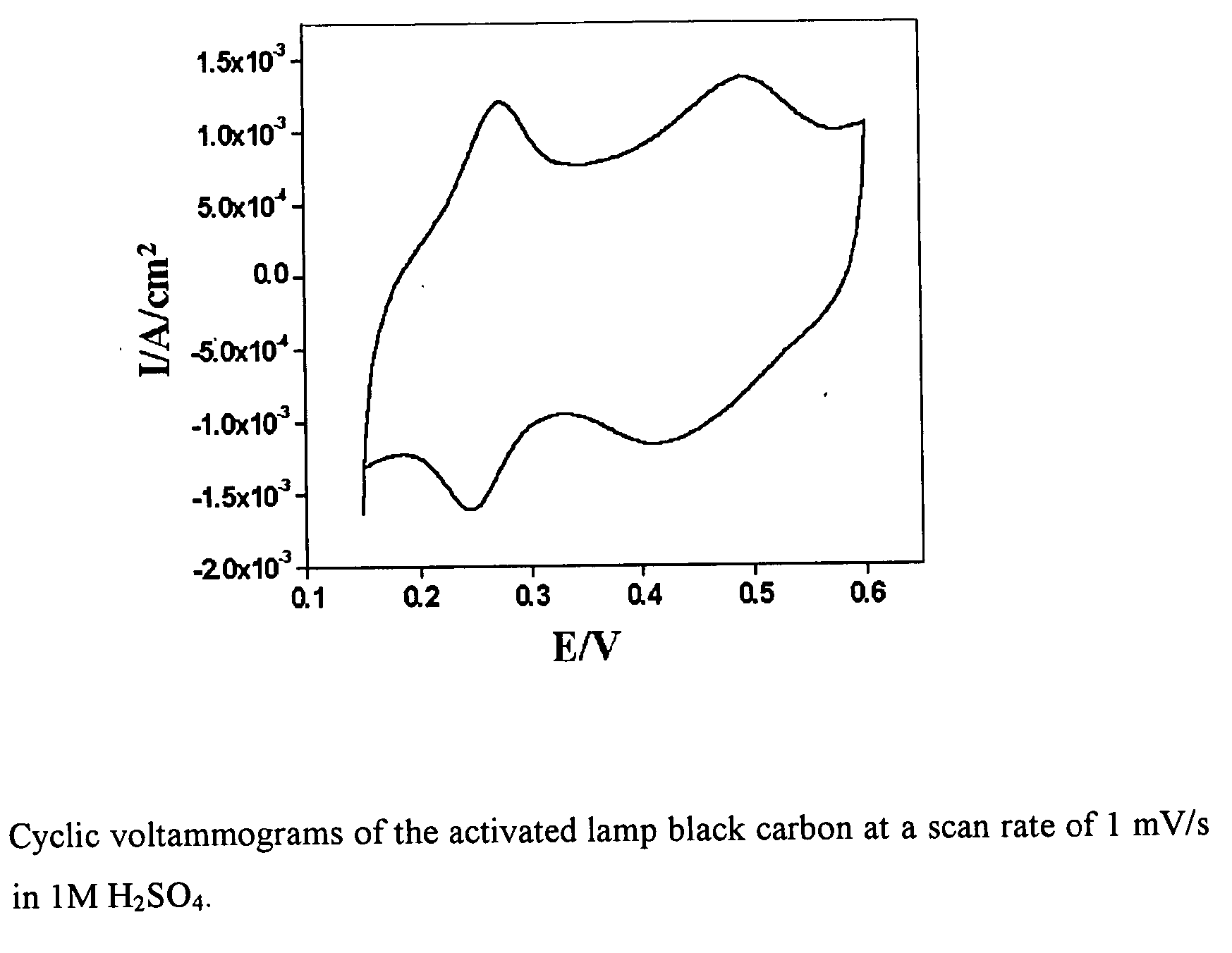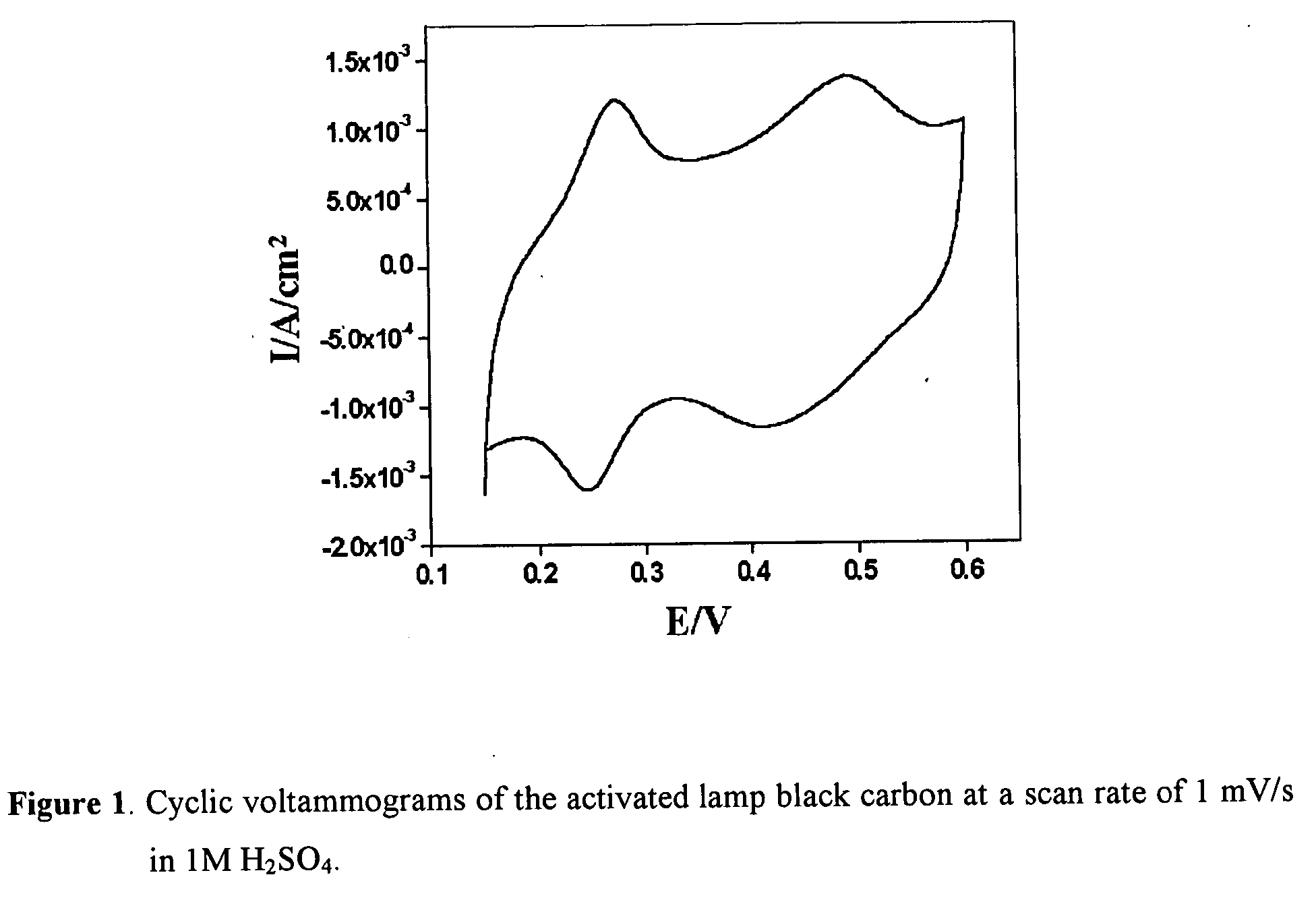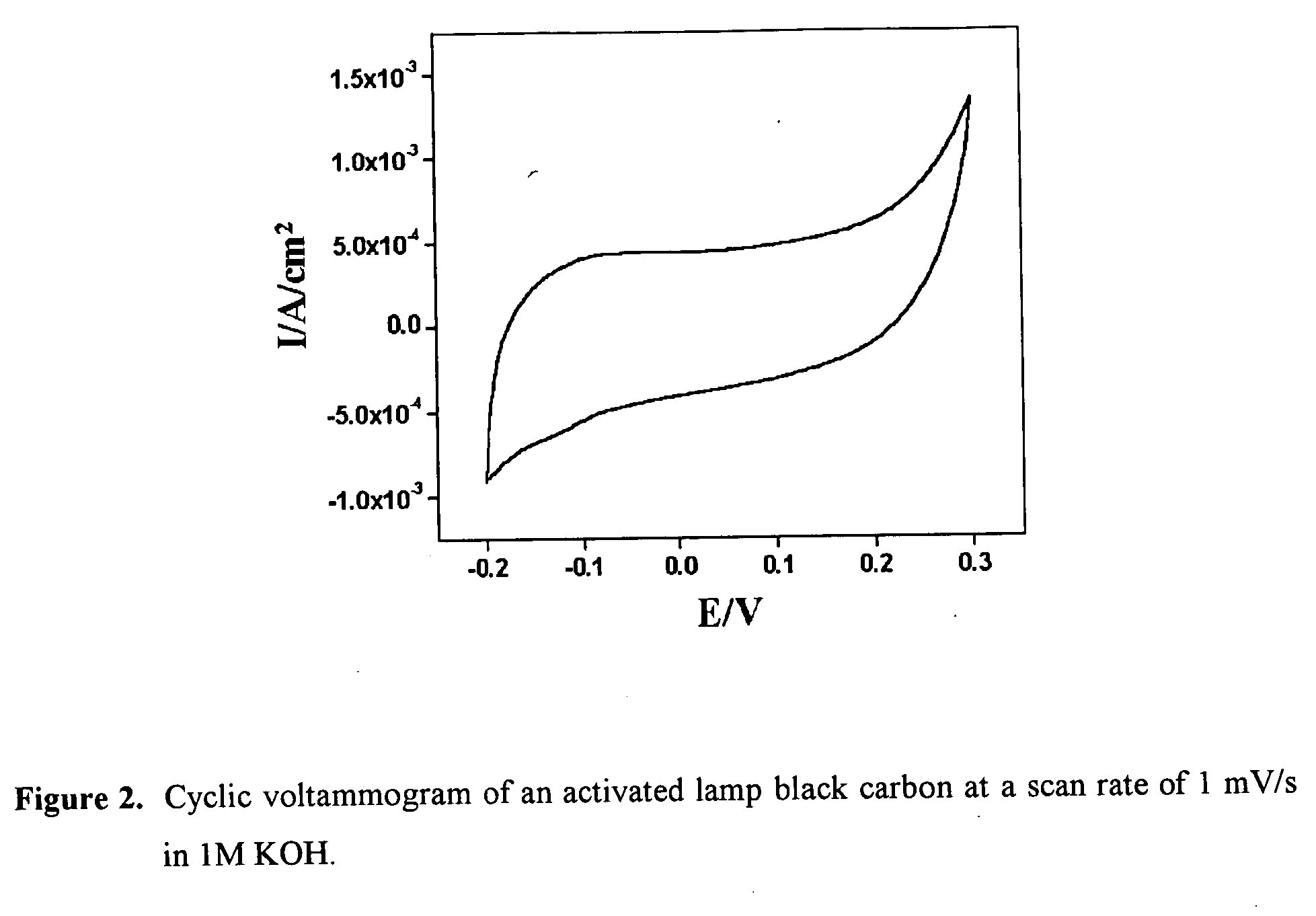Process for fabrication of ultracapacitor electrodes using activated lamp black carbon
a technology of ultracapacitor electrodes and black carbon, which is applied in the direction of electrolytic capacitors, capacitors, transportation and packaging, etc., can solve the problems of low specific capacitance value of electrode materials with high surface area, insufficient charge storage, and limited commercial applications
- Summary
- Abstract
- Description
- Claims
- Application Information
AI Technical Summary
Benefits of technology
Problems solved by technology
Method used
Image
Examples
example 1
[0022] In this example fatty substances specifically butter oil was burnt with the help of a cotton wick in a lamp. The lamp black carbon was collected by contact of the flame to a metallic surface where carbon in the vapor phase was deposited on the metal substrate by condensation process. The obtained lamp black carbon was mechanically ground to obtain uniform particle size. The homogenized lamp black carbon was then activated in a tubular furnace at higher temperature of 900° C. for 9 hours maintaining the heating rate of 5° C. / min in an inert atmosphere of nitrogen with a flow rate of 20 ml / min. Specific capacitance of the activated lamp black carbon was measured by cyclic voltammetry wherein the working electrode was fabricated by mechanically grinding a mixture containing 75% activated lamp black carbon, 20% graphite and 5% ethyl cellulose binder to produce homogenized mixture which was then pasted on to a stainless steel mesh using tetrahydrofuran as a solvent. The electrode ...
example 2
[0023] Lamp black carbon was obtained as given in example 1. The homogenized lamp black carbon was then activated in a tubular furnace at a higher temperature of 800° C. for 7 hours maintaining the heating rate of 10° C. / min in an inert atmosphere of nitrogen with a flow rate of 25 ml / min. Specific capacitance of the activated lamp black carbon was measured by cyclic voltammetry where the working electrode was fabricated by mechanically grinding a mixture containing 75% activated lamp black carbon, 20% graphite and 5% ethyl cellulose binder to produce homogenized mixture which was then pasted on to a stainless steel mesh using tetrahydrofuran as a solvent. The electrode was then pressed at room temperature and then at 160° C. for two minutes at a pressure of 200 psi. Platinum foil was used as a counter electrode and Hg / HgO as a reference electrode. The specific capacitance was measured to be 20 F / g in 1M KOH. Specific surface area was measured to be 350 m2 / g by BET method.
example 3
[0024] In this example vegetable oil obtained from groundnut was burnt with the help of a cotton wick in a lamp. The lamp black carbon was collected by contact of the flame to a metallic surface where carbon in vapor phase was deposited on the metal substrate by condensation process. The homogenized lamp black carbon was then activated in a tubular furnace at higher temperature of 600° C. for 8 hours maintaining the heating rate of 5° C. / min in an inert atmosphere of argon with a flow rate of 20 ml / min. Specific capacitance of the activated lamp black carbon was measured by cyclic voltammetry wherein the working electrode was fabricated by mechanically grinding a mixture containing 75% activated lamp black carbon, 20% graphite and 5% ethyl cellulose binder to produce homogenized mixture which was then pasted on a stainless steel mesh with the help of tetrahydrofuran as a solvent. The electrode was then pressed at room temperature and then at 160° C. for two minutes at a pressure of ...
PUM
| Property | Measurement | Unit |
|---|---|---|
| Temperature | aaaaa | aaaaa |
| Time | aaaaa | aaaaa |
| Specific surface area | aaaaa | aaaaa |
Abstract
Description
Claims
Application Information
 Login to View More
Login to View More - R&D
- Intellectual Property
- Life Sciences
- Materials
- Tech Scout
- Unparalleled Data Quality
- Higher Quality Content
- 60% Fewer Hallucinations
Browse by: Latest US Patents, China's latest patents, Technical Efficacy Thesaurus, Application Domain, Technology Topic, Popular Technical Reports.
© 2025 PatSnap. All rights reserved.Legal|Privacy policy|Modern Slavery Act Transparency Statement|Sitemap|About US| Contact US: help@patsnap.com



